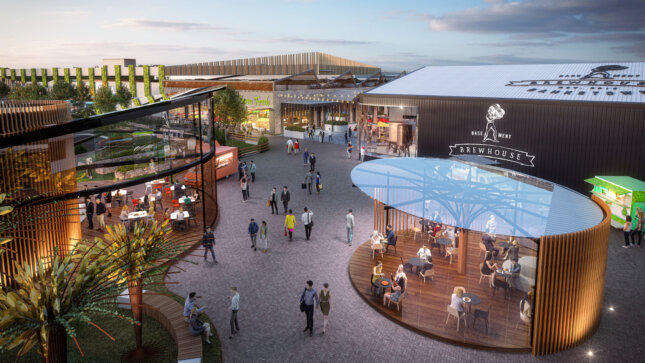The retail landscape – Okana Alliance Report

The retail landscape, is set for a major shake up according to a report i2C has created in collaboration with global Okana partners concept i, and ruben reddy architects which will see it evolve to put the shopper at its core.
The report looked at shopping centres across Australia and New Zealand and some parts of Africa and Asia.
It found that the retail landscape will be geared towards more mixed-use environments for shopping, entertainment, education, connection and community and will be more creative, technology-led, informative, and socially conscious.

Products and tenant stores will still exist, but the emphasis will not solely be on sales but on creating and nurturing a relationship with the consumer that transcends the store. The experience a customer has is likely to dictate the centre they choose to visit and this experience is influenced and enhanced by key factors such as technology, health and wellbeing, sustainability practices, community ties and mixed-use offering.

In Australia, shopping centres account for approximately 46 per cent of the total retail space, which equates to approximately 106 square metres of Gross Living Area per 100 people; a relatively high number by world standards.
‘Retail Trade’ is the single highest private sector contributor to employment in Australia and in 2019, total retail sales made through Australian shopping centres were estimated to be $141 billion, equivalent to 7.4 per cent of Australia’s gross domestic product.
In an age where information and data collection is at an all-time high, the retail sector is continuing and will continue to harness information and insight into their customers in order to predict preferences and influence customer behaviour, thus driving sales.
Shopping centres in Australia for some time now have been using door counters, car park boom gates and license plate recognition to collect information on customer numbers, where people are arriving from, modes of transport and how long people are spending there. This data is then used to influence the tenancy mix, leasing strategy, and shift patterns in foot traffic accordingly.
The report found that while previous shopping centre tenants used technology in purely logistical and transactional ways, this century’s entrepreneurs will leverage technologies allowing them to interface and communicate with consumers.
Shopping centre operators have already been trialling new technologies to take personalisation and micro-segmentation to more intimate levels, this includes biometric and facial recognition systems upon entry into the shopping centre, which can recall a customer’s previous visits and can predict what they are likely to purchase and whether the correct size is available.
Globally, eye scanners and smart advertising screens exist that can detect the moods of viewers, predict their age and individual levels as a means of maximising each customer to the business and to sufficiently satisfy their needs.
The report also found that smart speakers and voice shopping technology are likely to be the next big thing in the retail world. Approximately half a million Australian households owned a smart speaker at the end of 2017 and this is forecast to grow to 3 million Australian households by 2022.

While technology is likely to take centre stage, another key focus for the future of retail is sustainability, with customer demand for sustainability only forecast to grow as time goes on. In Australia, Gen Z are more eco-minded than previous generations with 39 per cent admitting they would be willing to pay more for environmentally responsible products.
In terms of retail, this includes sustainable materials within the build itself but also extends to construction processes and operational energies. Looking ahead, consumers will not only expect but demand sustainable and ethical products and processes, with government regulation likely to support this to ensure sustainable processes are being enforced and maintained.
Last but not least, the shopping centre’s future will also see it geared towards the town centre experience; becoming a meeting place within the suburbs that house them and regional centres offer not only retail outlets but also hotels, office towers, entertainment options and residential spaces. This model is already being explored across Australia with apartments being built atop shopping centres at The Glen, and Chadstone welcoming a hotel integration.

Thank you to the following Okana research team for their work on this retails landscape retail piece.


i2C Architects
